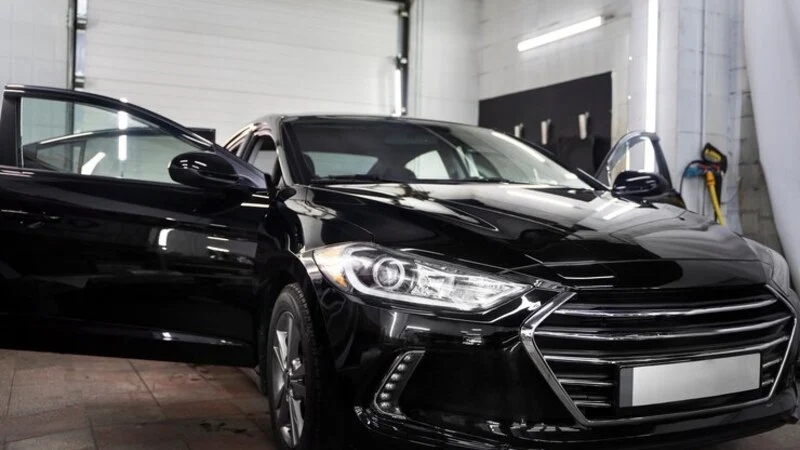In the realm of automotive safety and efficiency, the integration of technology has revolutionized vehicle inspection processes. From traditional manual checks to advanced digital assessments, technology plays a pivotal role in ensuring vehicles meet safety standards, environmental regulations, and performance benchmarks.
This article delves into the multifaceted ways technology has transformed modern vehicle inspection processes, enhancing accuracy, speed, and overall effectiveness.
Evolution of Vehicle Inspection
Historically, vehicle inspections were primarily conducted manually by certified technicians. These inspections involved visual examinations, mechanical tests, and emissions checks to ascertain the vehicle’s roadworthiness. While effective to some extent, manual inspections were time-consuming and susceptible to human error.
As technology evolved, automated inspection systems emerged, streamlining the process and enhancing accuracy. These systems utilize advanced sensors, AI algorithms, and computerized diagnostics, revolutionizing the efficiency and reliability of vehicle inspections.
Introduction of Technological Solutions
The advent of technology introduced a new era in vehicle inspection, offering innovative solutions to streamline the process and improve accuracy. One of the most significant advancements is the development of diagnostic tools and software applications designed specifically for vehicle inspections.
With the integration of artificial intelligence and machine learning algorithms, these tools can now predict potential issues before they arise, revolutionizing the way vehicle inspections are conducted.
Diagnostic Tools and Equipment
Modern vehicle inspection facilities are equipped with sophisticated diagnostic tools that interface with a vehicle’s onboard computer systems.
These tools can retrieve and analyze data related to engine performance, emissions levels, brake functionality, and more. By accessing real-time diagnostic information, technicians can quickly identify issues and pinpoint areas that require attention.
Remote Inspection Technologies
With the rise of remote technologies, vehicle inspections can now be conducted without physical presence. Remote inspection solutions utilize cameras, sensors, and mobile applications to assess vehicle conditions from a distance.
This is particularly useful for conducting preliminary inspections, evaluating fleet vehicles, or facilitating virtual transactions.
Automated Inspection Systems
Automated inspection systems employ robotics, artificial intelligence, and machine learning algorithms to perform comprehensive assessments of vehicles.
These systems can conduct visual inspections, measure component tolerances, and detect anomalies with unparalleled speed and precision. By automating repetitive tasks, such systems improve efficiency and reduce the likelihood of human errors.
Integration of Augmented Reality (AR)
Vehicle inspection processes integrate augmented reality technologies to enhance technician productivity and accuracy. AR applications overlay digital information onto the real-world environment, providing technicians with interactive guides, visual aids, and diagnostic overlays.
This immersive approach, powered by modern technology, simplifies complex tasks and enables technicians to perform inspections with greater confidence and proficiency.
Blockchain-Based Verification
Exploring blockchain technology enhances transparency and trust in vehicle inspection processes. Relevant stakeholders, including vehicle owners, regulatory authorities, and insurance providers, can securely store and access inspection records by leveraging the blockchain’s decentralized ledger. This ensures the integrity of inspection data and facilitates traceability throughout the vehicle’s lifecycle.
Advantages of Technology-Driven Inspections
The adoption of technology-driven inspection processes offers several benefits for vehicle owners, regulatory agencies, and service providers alike.
- Increased Accuracy: Technology-enabled inspections provide more precise assessments of vehicle condition, minimizing the risk of oversight and misdiagnosis.
- Enhanced Efficiency: Automation and digitalization streamline inspection workflows, reducing turnaround times and improving operational efficiency.
- Cost Savings: By identifying issues early and preventing costly repairs, technology-driven inspections help minimize maintenance expenses for vehicle owners and fleet operators.
- Data-driven Insights: The wealth of data generated during inspections can be leveraged to identify trends, track performance metrics, and optimize maintenance schedules.
- Improved Safety: Timely identification of safety hazards and compliance violations contributes to safer roads and reduces the risk of accidents caused by mechanical failures.
Future Trends and Innovations
Looking ahead, the evolution of vehicle inspection processes is poised to continue with the emergence of new technologies and innovative solutions. Some of the anticipated trends include:
- Artificial Intelligence (AI) Integration: AI-powered algorithms will enable predictive maintenance capabilities, allowing vehicles to anticipate maintenance needs based on real-time data analysis.
- IoT Connectivity: The Internet of Things (IoT) will facilitate seamless communication between vehicles, inspection equipment, and service centers, enabling proactive monitoring and remote diagnostics.
- Augmented Reality (AR) Advancements: AR applications will evolve to provide immersive, hands-free inspection experiences, leveraging wearable devices and holographic displays.
- Advanced Sensor Technologies: Miniaturized sensors and IoT-enabled devices will enable more comprehensive and non-invasive inspections, detecting hidden defects and abnormalities.
- Blockchain-enabled Verification: The widespread adoption of blockchain technology will establish standardized protocols for verifying inspection records and ensuring data integrity across the automotive ecosystem.
Conclusion
Technology has become an indispensable tool in modern vehicle inspection processes, offering unprecedented capabilities for assessing vehicle conditions, diagnosing issues, and ensuring compliance with regulatory standards.
From diagnostic tools and automated systems to blockchain-enabled verification, the integration of technology continues to drive innovation and efficiency in the automotive industry.
As technology evolves and new advancements emerge, the future of vehicle inspections promises even greater safety, reliability, and transparency for modern vehicles on the road.
